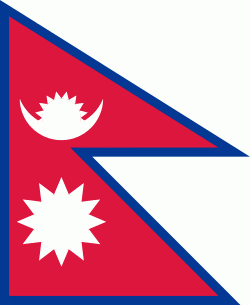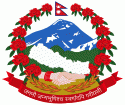Far-Western Region (Sudur Pashchimanchal)
The Far-Western Development Region (Nepali: सुदुर पश्चिमाञ्चल विकास क्षेत्र, Sudur Pashchimānchal Bikās Kshetra) was one of Nepal's five development regions. It was located at the western end of the country and had its headquarters in Dipayal.
The Far-Western Region covered 19,539 square kilometers. It had nine districts with the regional headquarters at Dipayal, Doti district. The Far-Western Region was remote and developmentally challenged. Some 44% of people in the Far West Hills and 49% in the Himalayan districts lived below the poverty line. The region had limited basic services. The difficult topography complicated development. The region had complex socio-economic structures along with widespread gender- and caste-based discrimination. Traditional systems associated with religion, culture and customs had limited overall development.
It comprised two zones:
* Mahakali
* Seti
The region was sometimes called the Doti region, which some believe originated from 'Dovati' meaning land between two rivers. Others believed it originated from the Hindu god Dev and Aatavi, meaning the place of re-creation. History went back to the 13th century when Niranjan Malldeo founded the Doti Kingdom following the fall of the Katyuri Kings. Dotiyali and Kumauni were spoken there. Deuda, Jhoda, Chhpeli, Chhaliya, Bhada etc. were traditional regional dances and Gaura/Gamara is the biggest festival.
Doti was an ancient kingdom of the Far-Western region of Kumaon which was formed after disintegration of the Katyuri kingdom of Kumaon and the Far-Western region during the 13th century. Doti was one of eight princely states formed after the Kurmanchal Kingdom broke up. The others were Baijnath-Katyuri, Dwarahat, Doti, Baramandal, Askot, Sira, Sora and Sui (Kali kumaon). The kingdom broke up because of the invasion of Khas kings Ashoka challa and Krachalla from Karnali Zone (Dullu) of Nepal in 1191 and 1223 respectively. Later on, the land between Ramganga on the west (Uttarakhand) and the Karnali on the east (which divides the Far-Western region from the rest of Nepal) came under Raikas after the origin of Raikas of Katyuris in Doti. "Brahma Dev Mandi" at Kanchanpur District of Mahakali Zone was established by Katyuri king Brahma Dev.
The Far-Western Region covered 19,539 square kilometers. It had nine districts with the regional headquarters at Dipayal, Doti district. The Far-Western Region was remote and developmentally challenged. Some 44% of people in the Far West Hills and 49% in the Himalayan districts lived below the poverty line. The region had limited basic services. The difficult topography complicated development. The region had complex socio-economic structures along with widespread gender- and caste-based discrimination. Traditional systems associated with religion, culture and customs had limited overall development.
It comprised two zones:
* Mahakali
* Seti
The region was sometimes called the Doti region, which some believe originated from 'Dovati' meaning land between two rivers. Others believed it originated from the Hindu god Dev and Aatavi, meaning the place of re-creation. History went back to the 13th century when Niranjan Malldeo founded the Doti Kingdom following the fall of the Katyuri Kings. Dotiyali and Kumauni were spoken there. Deuda, Jhoda, Chhpeli, Chhaliya, Bhada etc. were traditional regional dances and Gaura/Gamara is the biggest festival.
Doti was an ancient kingdom of the Far-Western region of Kumaon which was formed after disintegration of the Katyuri kingdom of Kumaon and the Far-Western region during the 13th century. Doti was one of eight princely states formed after the Kurmanchal Kingdom broke up. The others were Baijnath-Katyuri, Dwarahat, Doti, Baramandal, Askot, Sira, Sora and Sui (Kali kumaon). The kingdom broke up because of the invasion of Khas kings Ashoka challa and Krachalla from Karnali Zone (Dullu) of Nepal in 1191 and 1223 respectively. Later on, the land between Ramganga on the west (Uttarakhand) and the Karnali on the east (which divides the Far-Western region from the rest of Nepal) came under Raikas after the origin of Raikas of Katyuris in Doti. "Brahma Dev Mandi" at Kanchanpur District of Mahakali Zone was established by Katyuri king Brahma Dev.
Map - Far-Western Region (Sudur Pashchimanchal)
Map
Country - Nepal
 |
 |
| Flag of Nepal | |
The name "Nepal" is first recorded in texts from the Vedic period of the Indian subcontinent, the era in ancient Nepal when Hinduism was founded, the predominant religion of the country. In the middle of the first millennium BC, Gautama Buddha, the founder of Buddhism, was born in Lumbini in southern Nepal. Parts of northern Nepal were intertwined with the culture of Tibet. The centrally located Kathmandu Valley is intertwined with the culture of Indo-Aryans, and was the seat of the prosperous Newar confederacy known as Nepal Mandala. The Himalayan branch of the ancient Silk Road was dominated by the valley's traders. The cosmopolitan region developed distinct traditional art and architecture. By the 18th century, the Gorkha Kingdom achieved the unification of Nepal. The Shah dynasty established the Kingdom of Nepal and later formed an alliance with the British Empire, under its Rana dynasty of premiers. The country was never colonised but served as a buffer state between Imperial China and British India. Parliamentary democracy was introduced in 1951 but was twice suspended by Nepalese monarchs, in 1960 and 2005. The Nepalese Civil War in the 1990s and early 2000s resulted in the establishment of a secular republic in 2008, ending the world's last Hindu monarchy.
Currency / Language
| ISO | Currency | Symbol | Significant figures |
|---|---|---|---|
| NPR | Nepalese rupee | ₨ | 2 |
| ISO | Language |
|---|---|
| EN | English language |
| NE | Nepali language |















